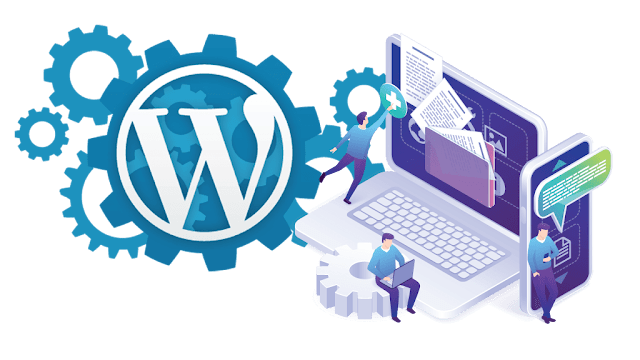How to Optimize WordPress Hosting for Faster Loading Times
WordPress is the most popular content management system (CMS) in the world, powering over 40% of all websites on the internet. However, despite its popularity, WordPress can be slow and sluggish if not optimized correctly. Slow loading times can have a negative impact on user experience, search engine rankings, and overall website performance. In this blog post, we'll discuss how to optimize WordPress hosting for faster loading times.
1.
Choose a reliable hosting provider
When choosing a
hosting provider for your WordPress website, you want to ensure that the
provider offers a reliable and fast server with minimal downtime. A hosting
provider that uses the latest server technologies, such as solid-state drives
(SSDs), PHP 7, and HTTP/2, can significantly improve the website's load time.
Look for a provider that offers optimized server configurations specifically
for WordPress, such as managed WordPress hosting.
2.
Optimize your WordPress installation
Keeping your
WordPress installation up to date with the latest version of WordPress, themes,
and plugins is crucial for maintaining website security and improving
performance. Outdated software can cause security vulnerabilities and slow down
your website's load time. Additionally, removing any unused themes and plugins
can reduce the website's size and reduce the server's workload, resulting in
faster loading times.
3.
Use a caching plugin
A caching plugin
is a crucial tool for optimizing WordPress hosting for faster loading times.
When a user visits a website, their browser sends a request to the server to
load the website's content. With a caching plugin, the website's static files
are stored in the user's browser or server, reducing the server's workload and
speeding up the website's load time for subsequent visits. Popular caching
plugins for WordPress include WP Super Cache, W3 Total Cache, and WP Rocket.
4.
Minimize HTTP requests
Minimizing the
number of HTTP requests sent to the server can significantly improve the
website's load time. Combining CSS and JavaScript files and minimizing the use
of images can reduce the number of requests sent to the server, speeding up the
website's load time. Additionally, using a CDN can also help minimize HTTP
requests.
5.
Optimize images
Images are often
the largest contributor to slow loading times on WordPress websites. Optimizing
images by compressing them and reducing their size can significantly improve
the website's load time. Additionally, using responsive images can ensure that
images are displayed correctly on various devices without affecting the
website's load time.
6.
Use a Content Delivery Network (CDN)
A Content Delivery
Network (CDN) can significantly improve the website's load time by storing
static files on multiple servers worldwide. When a user requests content from
the website, the CDN serves the content from the server closest to the user,
reducing the distance the data has to travel and improving the website's load
time. Popular CDNs for WordPress include Cloudflare, MaxCDN, and KeyCDN.
Optimizing
WordPress hosting for faster loading times requires a combination of optimizing
the website's installation, reducing the server's workload, and using tools
like caching plugins and CDNs. By following these tips, you can significantly
improve your WordPress website's load time and provide a better user
experience.
How To access
WordPress Hosting server:
To access your
WordPress hosting server, you will need to use either an FTP client or a
web-based file manager. Here are the steps you can follow to access your
WordPress hosting server:
- Get your server login
credentials: You will need your server login credentials to access your
WordPress hosting server. These credentials typically include a username
and password, and you should have received them when you signed up for
your hosting account.
- Choose an FTP client or
web-based file manager: You can use an FTP client like FileZilla or
Cyberduck to access your server or use a web-based file manager provided
by your hosting provider.
- Connect to your server: Launch
your FTP client or web-based file manager and connect to your server using
your server login credentials. You will need to enter your server's
hostname or IP address, username, password, and port number.
- Navigate to your WordPress
installation folder: Once you are connected to your server, navigate to
the folder where your WordPress installation is located. This folder is
typically named "public_html" or "www" and is located
in the root directory of your server.
- Make changes to your WordPress
files: You can make changes to your WordPress files, such as uploading new
themes and plugins, modifying your theme's code, or editing your website's
content.
- Disconnect from your server:
Once you have made the necessary changes to your WordPress files,
disconnect from your server to ensure the security of your website.




Comments
Post a Comment